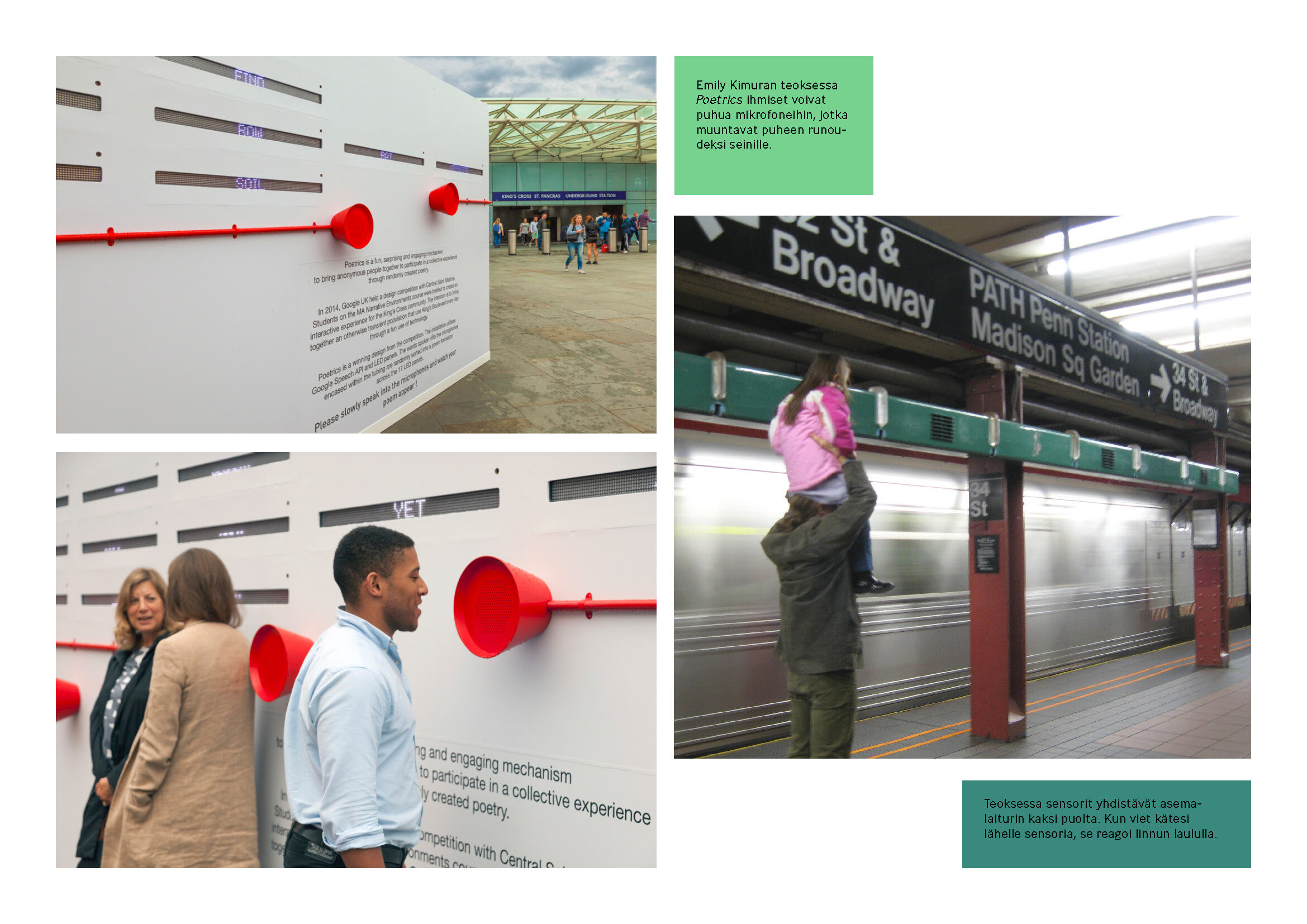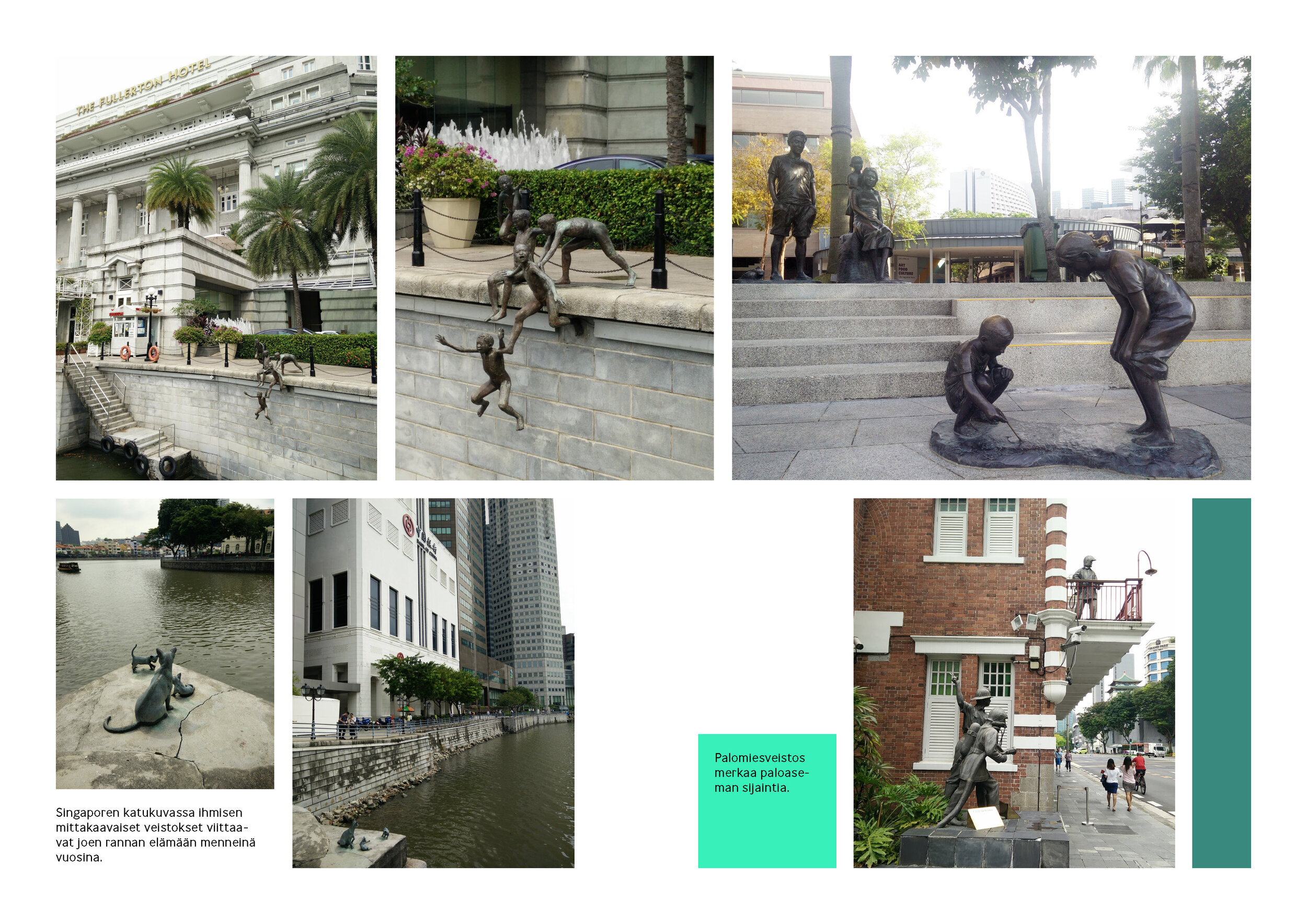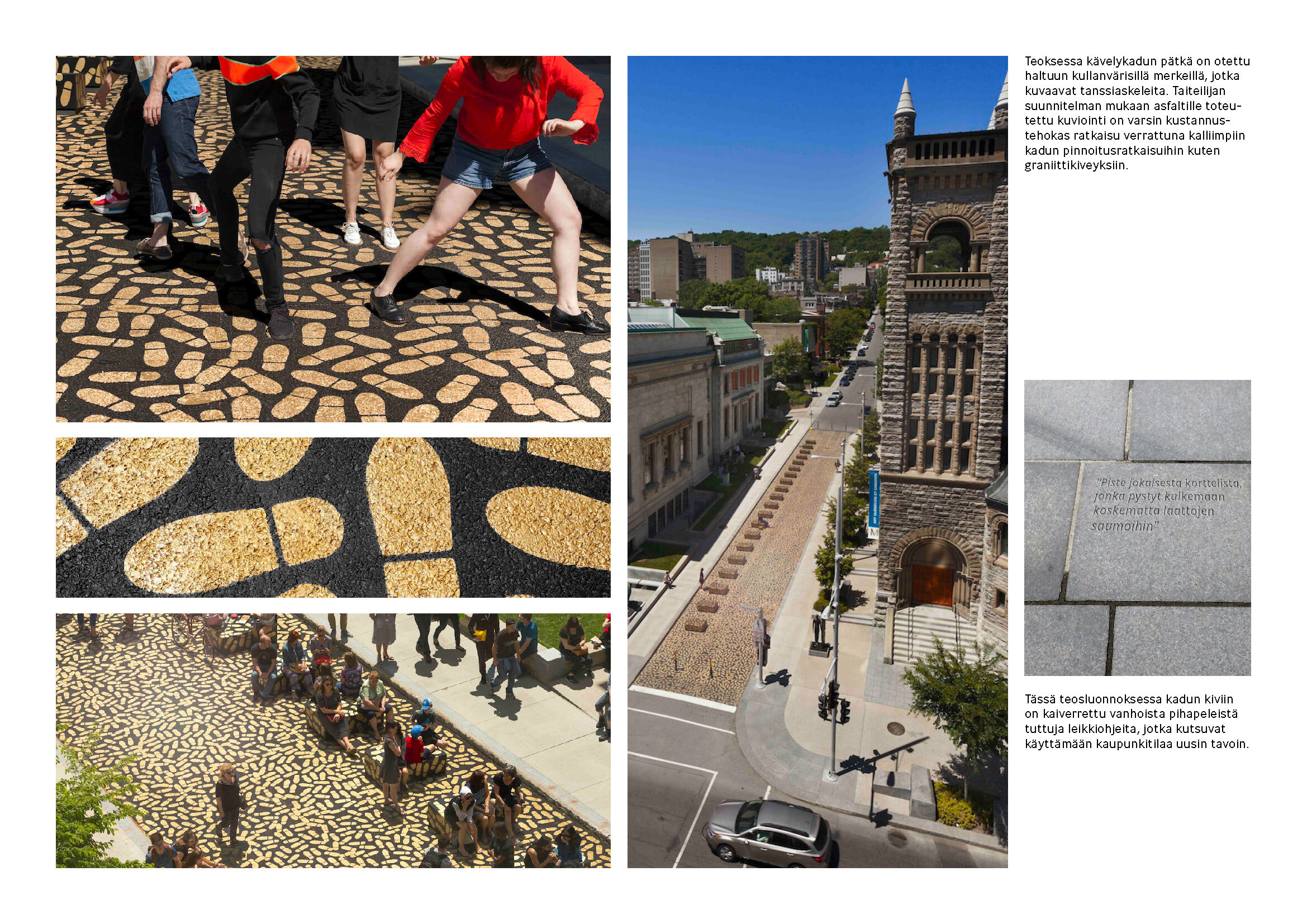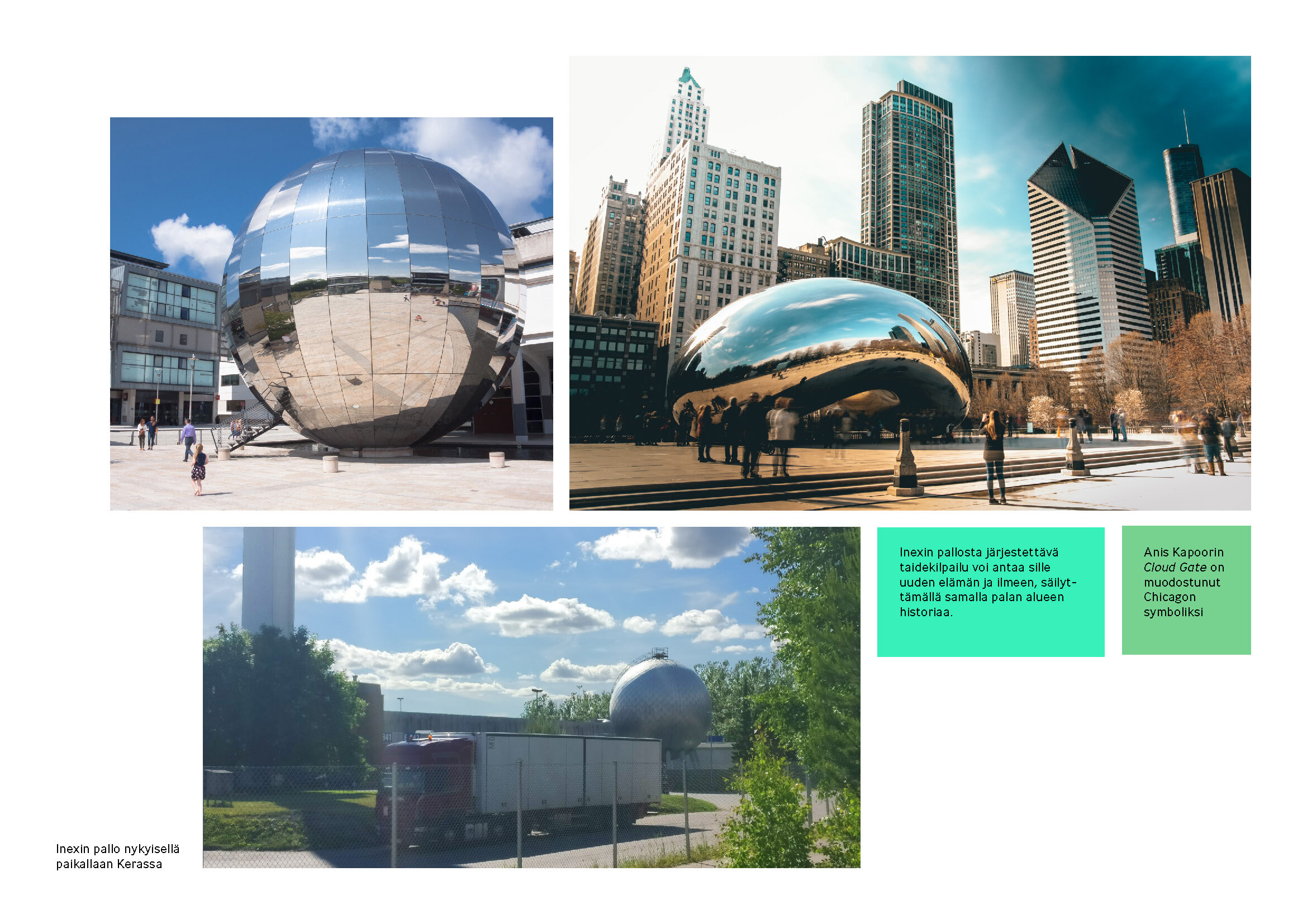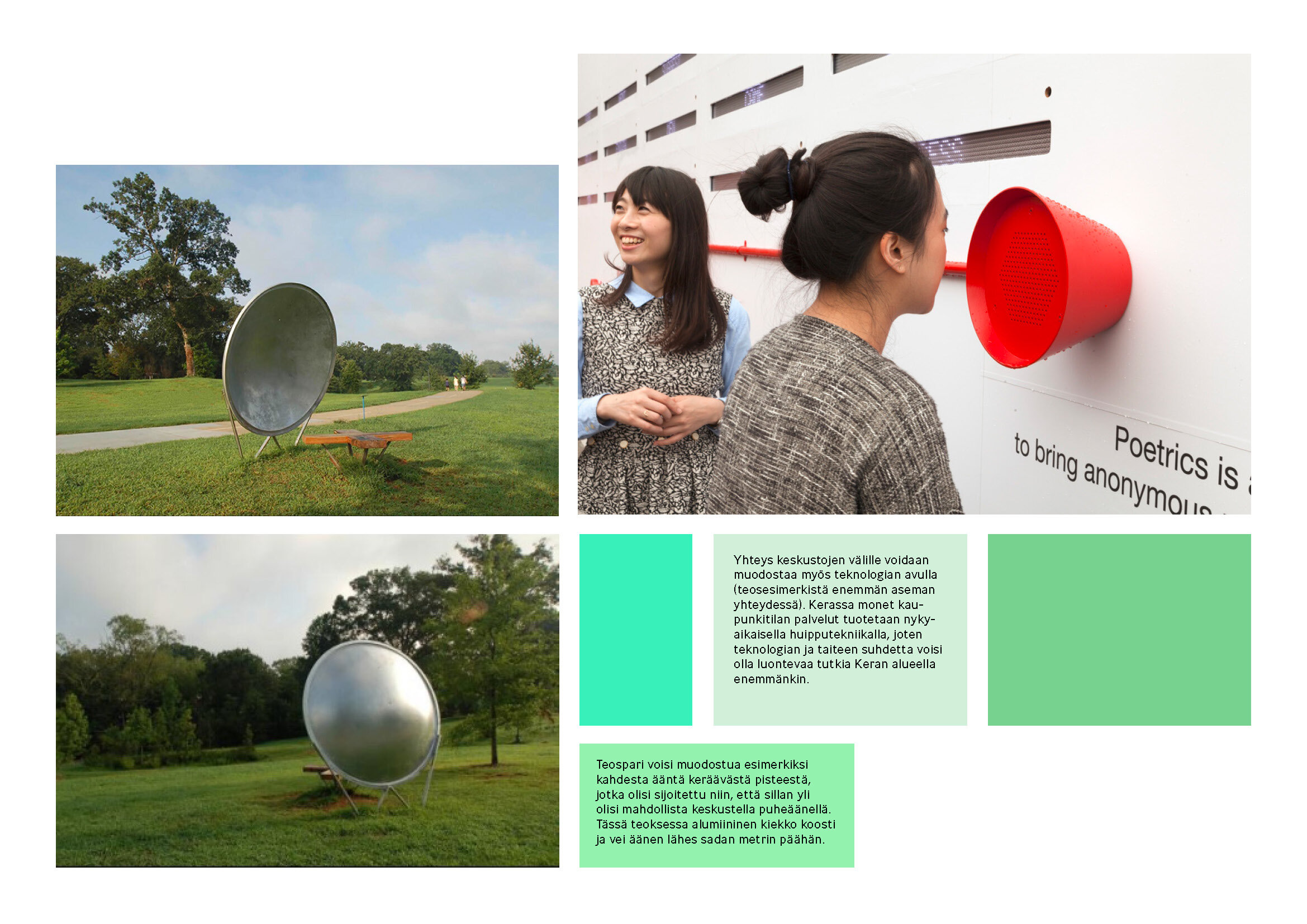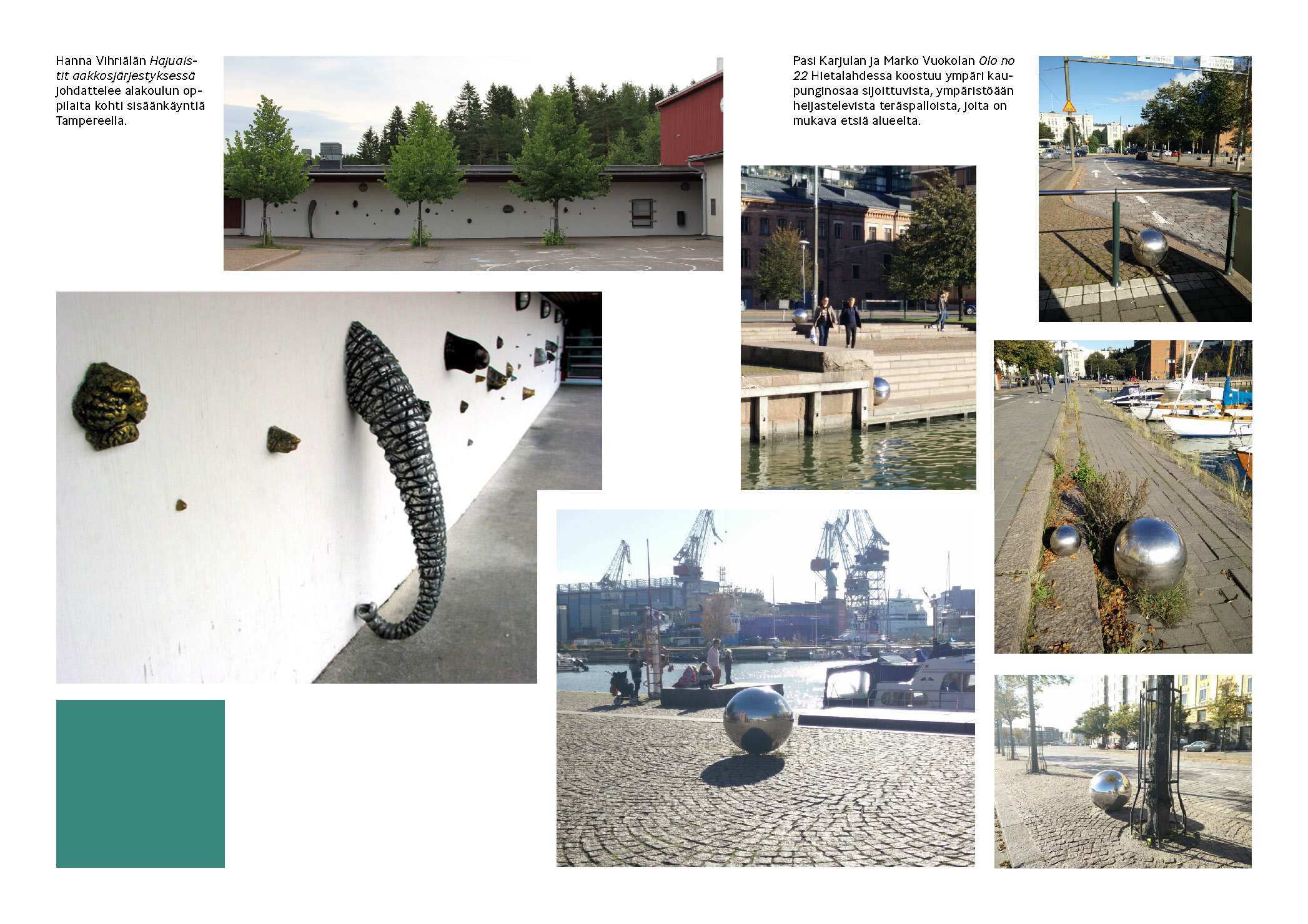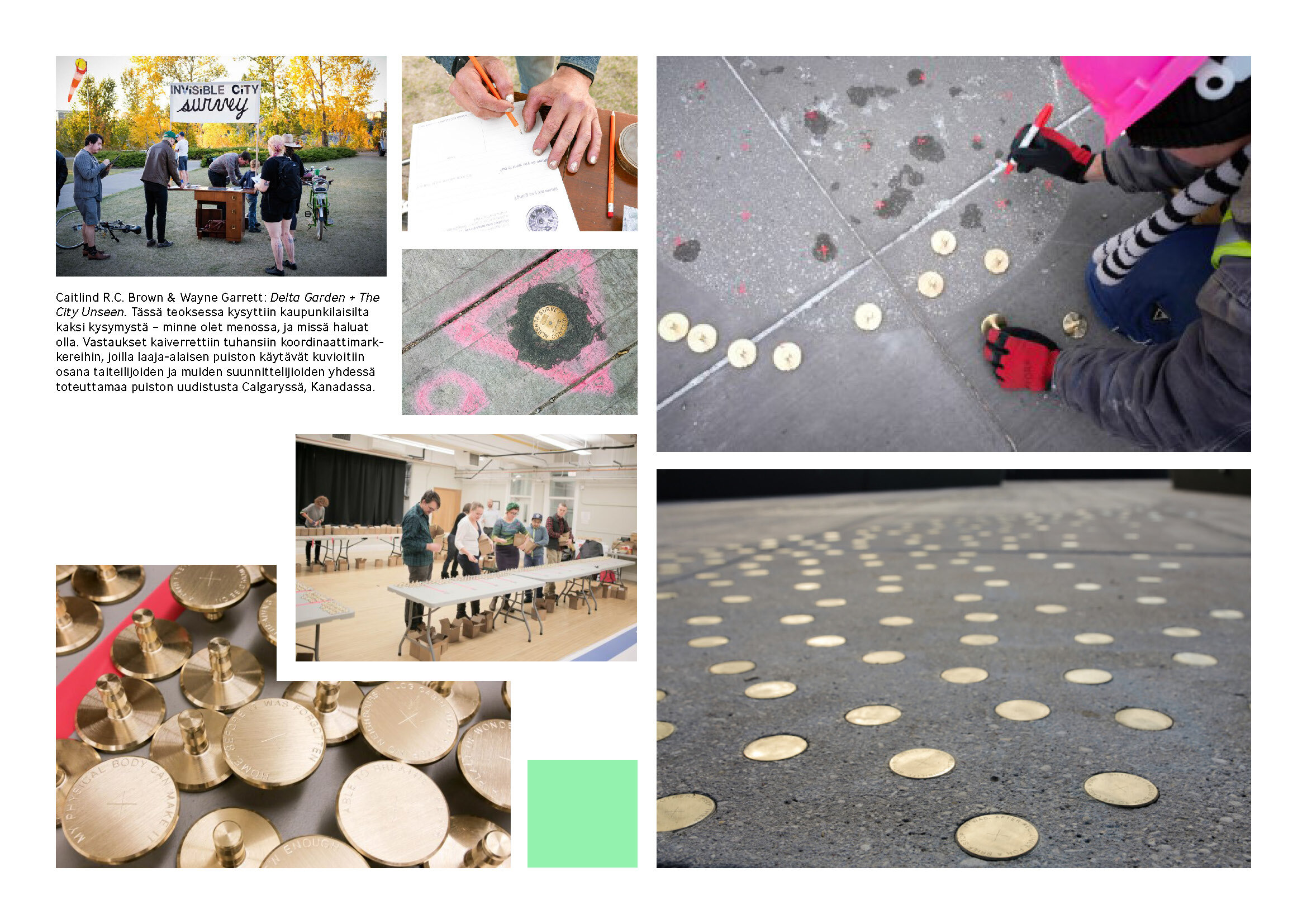Art Program for Kera is published
Are We There Yet, asks Duncan McDaniel’s work in Nashville, where this artwork doubles as a bike rack. Also in Kera, works of art will be strongly integrated in the urban structures.
The neighbourhood of Kera has a brand new art program! The program was created in multidisciplinary collaboration with different designers, closely connected to the area planning process. You can download the program for free in pdf form below.
The program, meant to be used in the city planning process in a city Finland, is only available in Finnish. This blog post offers a summary of the work in English.
What is Kera?
Kera is situated in Eastern Espoo, Finland, covering approx. 80 hectares of land. The area is divided in two by the railroad connecting it to neighbouring city, Helsinki, and Turku, further west. For years, Kera was known as an industrial area. Currently most of the industrial buildings are empty, while the need for housing in the metropolitan area of Helsinki is growing. The city, in collaboration with the landowners in the area, have started working to turn the area into a neighbourhood for new housing and business. The work is now at the area planning phase, in which the framework and guidelines for new buildings are drawn up and agreed upon. This art program was created to be attached to the official area plan documents, to help guide the future of public art in Kera.
What we did?
Public Art Agency Finland created the art program as a team of four people, including specialists from different fields of art. Combining experience from different fields, we were able to create a program that takes the opportunities of different kinds of art into consideration as widely as possible. “Thinking about public art at an early stage of urban planning like this, helps make it happen in the future. When we have clear goals and basic guidelines, it is easier both financially and in terms of division of roles, to kind of weave it in the process of urban planning and design.” describes Maija Kovari, who worked as the project leader.
Our work included negotiations and meetings as well as workshops with different departments inside the city, as well as collaborating with other consulting designers, landscape architects and constructors, to find both the best sites for works, and the best practices to move forward to make them happen in the future.
Possibilities for art in different parts of the neighbourhood were studied in workshops with city planners, land owners and consulting landscape architects and other designers.
Eventually, a plan consisting of four main areas was agreed upon. The main rea, with the strongest need and opportunities for art is the station, and spaces connected to it. That is followed, in order of importance, with the pedestrian areas in both sides of the station, and the long park that stretches from north to south through the whole area. The last area recognised was the four directions from which the area is approached. Below are the four areas on a simplified map.
The four areas for art in Kera form a hierarchy, emphasising the importance of the cenral, most visited sites of the neighbourhood.
In the art program, ever one of these four areas was then studied and different sites for different kinds of art recognised inside each of them. Those were then approach through examples to illustrate the possibilities in the site in question. For example, the underground tunnels around the station were recognised as potential risk areas (darkness, noise, 24/7 access), and different kinds of approaches in art were studied as possible solutions to these risks.
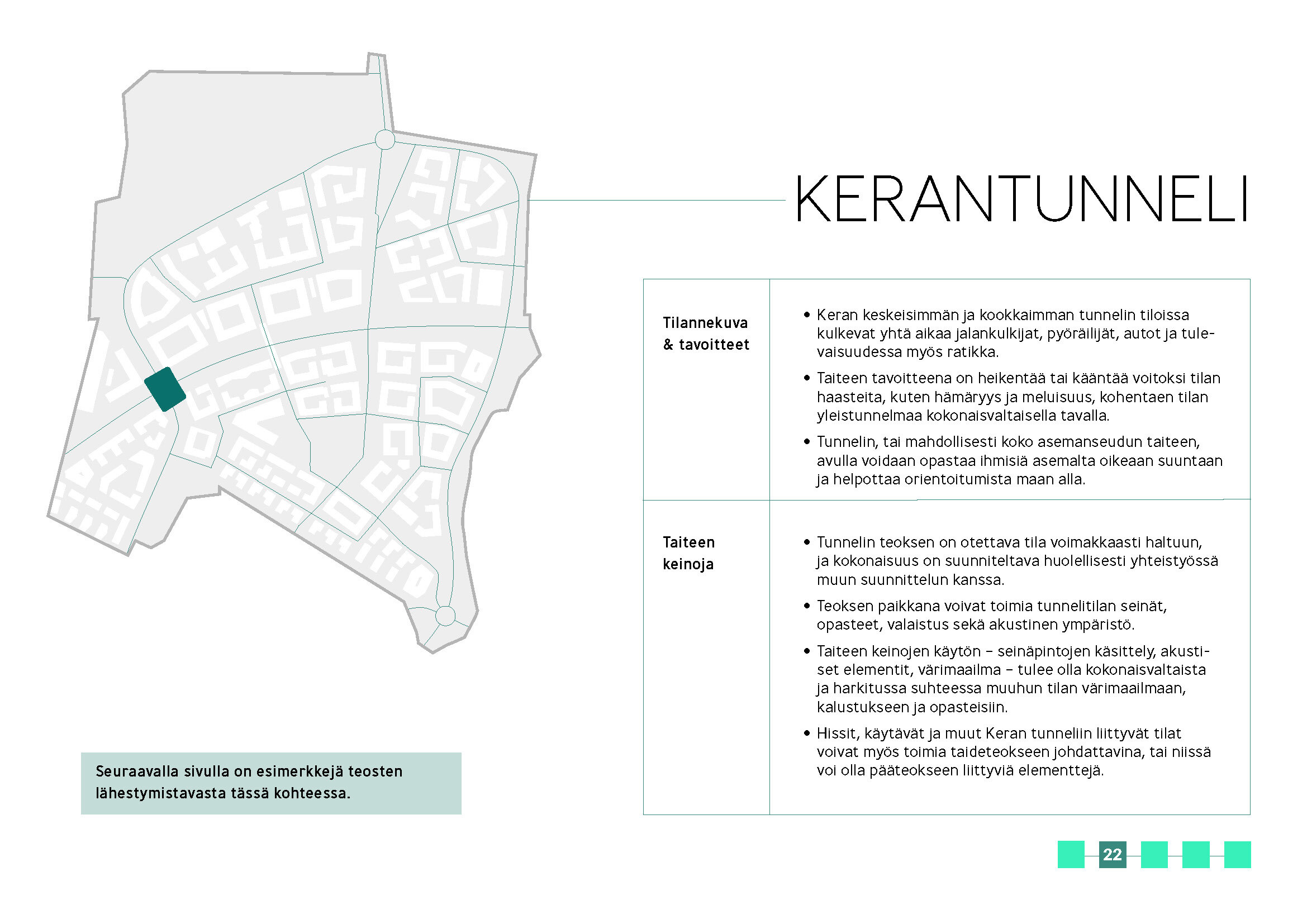
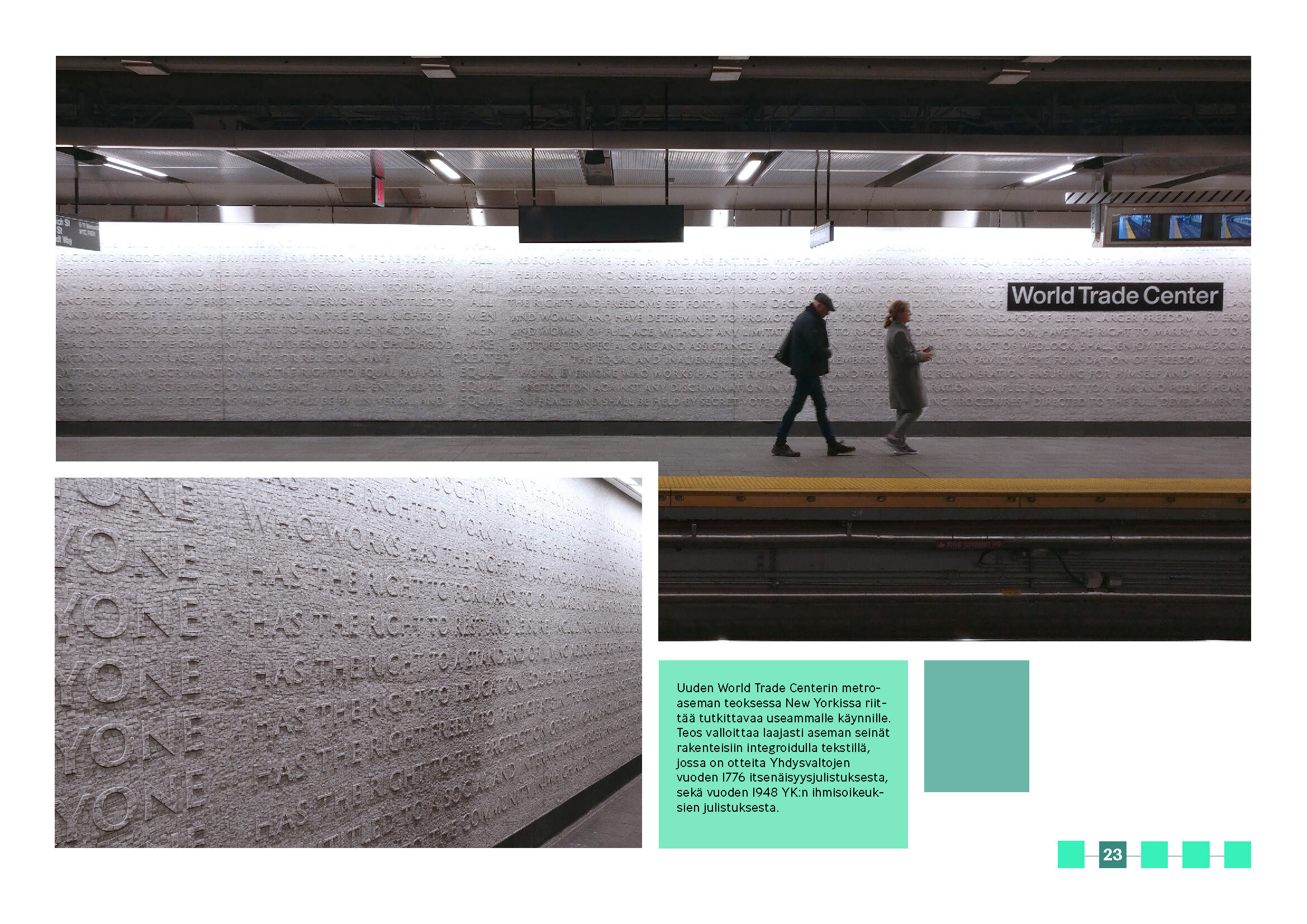
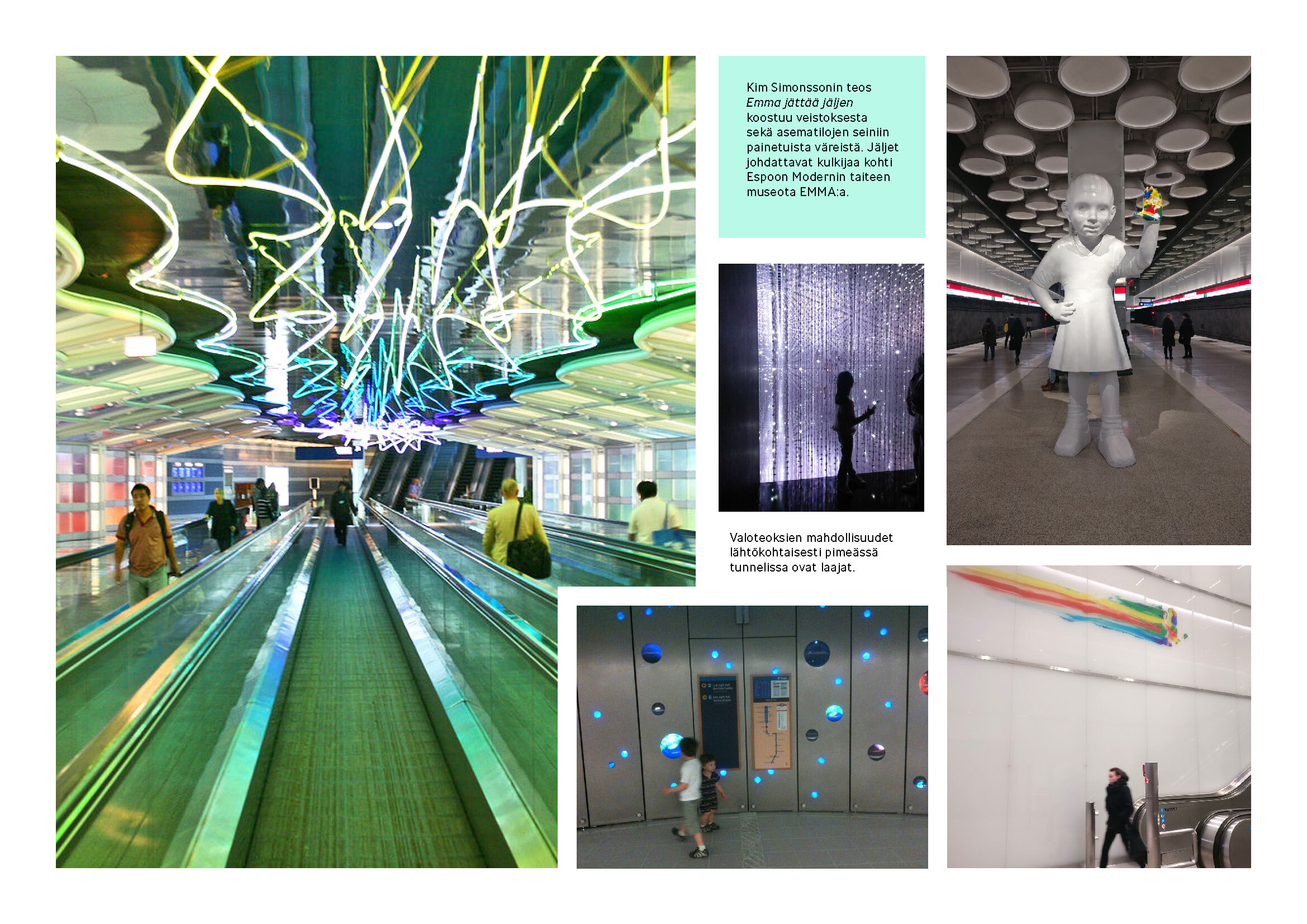
The program also went into detail in finding suitable methods for collaboration between planners, artists and so on, and well as questions of responsibility and division of labour between the parties. These questions link strongly the newly published principles for public art in Espoo, of which you can read more about here.
What is included in the price of an artwork? Diagrams in the program illustrate questions around public art.
The question of funding was also addressed in the program, along with creating a more open understanding of the price of public art, and what affects it.
Why?
Why build public art for Kera? Examples from Finland and abroad show consistently, that public art has the power to create moments of joy in everyday surroundings, bringing people together and creating a sense of belonging. When this is done in a systematic way, starting in the early stages of urban planning, it is possible to integrate art in the ordinary structures of urban development, avoiding it becoming a cost issue in any stage of the process. This work has now begun in Kera!
Below are some wonderful examples of public art from Finland and abroad as showcased in the program - please download the program in full to learn more!
